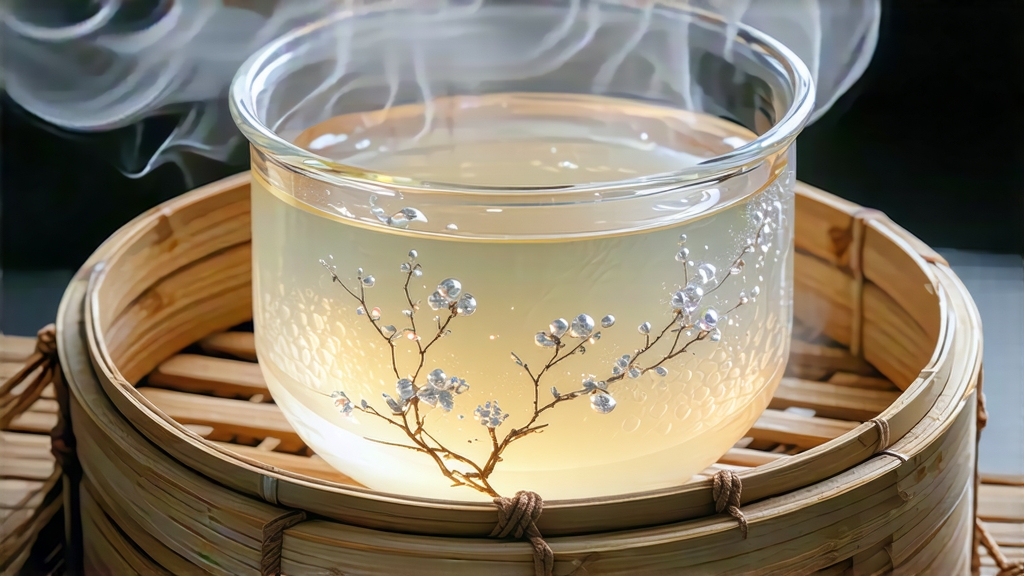
Tucked high on the forested ridges of southern Yunnan, where the Mekong bends like a silk ribbon and the air smells of wild citrus blossom, a tea is made that tastes of cool moonlight on fresh hay. International menus sometimes list it simply as “Yunnan white tea,” but in the mountain villages of Jinggu, Zhenyuan and Lincang it bears a more romantic name: Yue Guang Bai—Moonlight White. Unlike the better-publicized Fujian white teas such as Silver Needle or White Peony, Yue Guang Bai is a reclusive cousin, born of frontier terroir, Dai minority leaf-handling customs and a nocturnal withering ritual that has only entered written records in the last three decades. Yet its honeyed aroma, low astringency and surprising aging potential are quietly winning converts from Melbourne to Montreal. This article invites you to meet the tea, from the myth-shrouded origin story to the exact angle at which you should pour water over the downy leaves.
-
Legends and documented history
Villagers around Jinggu still tell the story of a 1980s night when a Dai tea master named Ai-ying forgot her freshly picked buds inside a bamboo drum. A full moon rose, silvering the valley, and when she returned at dawn the leaves had lost their grassy edge, turning an ethereal grey-white. She pan-fired them lightly, dried them in shade, and sent a small parcel to the provincial tea office. The cuppers there were struck by a liquor the color of late-harvest Riesling and a fragrance that reminded them of night-blooming jasmine. Whether or not the tale is apocryphal, export logs show the first commercial batch labeled “Yue Guang Bai” shipped from Kunming in 1988, bound for Hong Kong. By 2005, when pu-erh interest exploded, moonlight-white tea was being pressed into 100-gram mini cakes and marketed as a “white pu-erh,” a hybrid category that still confuses customs officers. Today, Yunnan Agricultural University classifies Yue Guang Bai as a white tea—because it is withered and dried without rolling or high heat—but acknowledges that the material is the same large-leaf Camellia sinensis var. assamica used for pu-erh, giving it a sturdier constitution and darker cup than its Fujian siblings. -
Botanical fingerprint and terroir
The tea gardens sit between 1,400 m and 1,900 m, where daytime temperatures hover around 24 °C but plunge to 12 °C at night. Such diurnal shock slows respiration in the leaves, conserving amino acids and polyols that later translate into sweetness. Soils are lateritic, rich in iron and decomposed granite, yielding leaf veins that are unusually thick. When you hold a top-grade Yue Guang Bai bud against the light, you see a velvet of silver on one side and a charcoal-black reverse; locals call this “yin-yang mao,” claiming the dark side faced the moon during withering. Science simply notes that the anthocyanins concentrate on the upper epidermis when chlorophyll breaks down under cool, oxygen-poor conditions. -
Plucking standard
Only one standard guarantees the signature honey note: one bud plus the first unfolded leaf, picked before the Qingming festival when the morning dew is still cold. A skilled picker can finish 2 kg of fresh leaf in three hours—just enough, once dried, for 400 g of finished tea. Anything coarser produces the flatter, woody profiles found in supermarket versions. -
Crafting moonlight: a step-by-step portrait
a) Moonlight withering: trays of bamboo are set on raised racks inside open-walled barns. From 8 p.m. to 6 a.m., the leaves rest under natural moonlight (cloud cover is considered undesirable). Night breezes lower leaf temperature to 15 °C, slowing enzymatic oxidation to a crawl; this partial, “lazy” oxidation—around 5–8 %—is what places Yue Guang Bai between green and black tea on the oxidation spectrum.
b) Shade finish: at dawn, workers move the trays to a shaded corridor where diffused light finishes the moisture reduction to 15 %. No rolling, no twisting; the cell walls remain largely intact, preserving the fuzzy hairs.
c) Low-temperature bake: finally